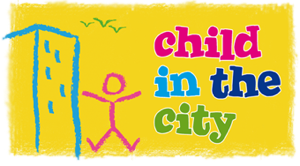Parallel session: Planning media projects (09:30 – 11:00)
Presentation 1: ‘Urban Space and Digital Realm – The Cyberspace Architecture of Information, Counseling and Participation for Children and Young People in Vienna’
Presented by: Stefan Kühne
Abstract: Children and young people explore their urban spaces, and at a certain age they start to explore the digital realm as well. We know a lot about how they discover urban spaces, how they discover different neighbourhoods, streets, modes of public transport and how they learn to navigate through and to interact within these urban spaces. But what about the digital space? How can a city like Vienna address the needs of children and young people in the ‘digital urban space’? How can we ensure that they discover the digital realm in a safe and responsible way? The presentation focusses on three different topics. First, we learn what Vienna has to offer in the field of information. Where can young people in Vienna find the information they need online, and what kind of resources can be provided to offer them safe, secure and also reliable sources of information. The second topic focusses on the possibilities of online counselling for young people. Many of them already know the facilities where they can get face-to-face counselling and advice. But how do we build a safe and secure online environment with a low threshold for them if they need someone to talk to via Mail, Chat or a Messenger-App? As young people seem to be online 24/7, it is important for the City of Vienna not only to offer face-to-face counseling, but also to meet the needs of the young people in the digital urban space. The third topic focusses on the possibilities for young people to participate online. How can we encourage young people to participate in decisions and how can the City of Vienna ensure that their basic needs are being met and their views being heard?

Presentation 2: Children and digital communication: Participation vs. Protection
Presented by: Anu Pöyskö
Abstract: A central development task for a child/young person is to gain independence by exploring his/her surroundings and continuously expanding his/her sphere of action. Today, this exploration of one’s own life worlds doesn´t only take place in natural, physical surroundings but in the digital worlds of media as well. On one hand, the main way to gain media and digital competences is to experiment and interact with digital media. On the other, digital media worlds offer no safe playgrounds but also expose children to potential hazards. A laissez-faire approach towards children’s exploration in online worlds clearly is irresponsible. Overemphasizing child protection might prove equally so, though, if it leads us formally to exclude children from (too) many forms of digital communication. Because informally, surely enough, they will keep on exploring, but – since it is forbidden – without any adult guidance. So how to find a good balance between childrens’ right to participate in digital communication and their right to grow up in a safe and healthy living surrounding- off- and online? How could parents, educational institutions and policymakers work together to make sure, that the digital citizen of tomorrow can develop their communication skills and experience creativity and self-expression in digital media worlds, without risking too much?

Presentation 4: ‘When I play too long on the tablet, my fingers ache and I get hungry.’ How primary school children use digital media. A qualitative Austrian study
Presented by: Marlies Zuccato-Doutlik and Raphaela Kogler
Abstract: Today, children encounter digital media already at young ages, as they represent essential parts of their everyday lives. However, scholarly knowledge about how primary school children use digital media, how they translate parental regulations into their own actions, how they navigate their extent of online time, which bodily experiences they make, and which strategies they develop when getting into contact with unpleasant content, is limited. In an attempt to explore these areas, we rely on a qualitative study that investigates the use of digital media from the perspectives of twelve Viennese children aged 6 to 10 and their parents (n= 22) who were interviewed separately. Results show that that the respondents had high media skills, high media literacy and a comprehensive understanding of different media content in dealing with Google, WhatsApp, YouTube or other applications. Even though the interviewed parents and children handled the use of digital media in a quite reflective way, children were confronted with non- child-friendly content. Parents tended to overestimate their children’s skills in judging and handling contents. The interviewed children developed different strategies in dealing with (a) time context (e.g. time constraints imposed by parents, bodily signs of excitement or exhaustion after extended media use), and (b) in dealing with unwanted and unpleasant content (e.g. inappropriate advertisements or videos). Furthermore, mobile phones had high significance for children’s everyday lives, leisure activities and independent mobility. Summing up, the study adds to the growing relevance of digital media in young ages, to the importance of supporting the voice of the child, to the fruitfulness of a multiple-perspectives approach, to the children’s and parents’ handling of digital media, and to a reconsideration of support offers for primary school children and their parents.


